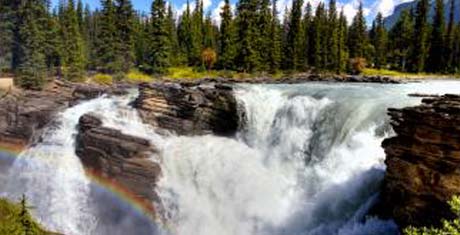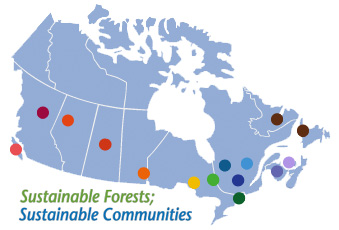
What is Biodiversity?
Biodiversity has three main parts. One is the number of species present. This includes: plants, animals, and micro-organisms. Biodiversity also includes the range of genes within each species and the ecosystem types in which they live. As home to a large variety of each component, Canada's forests play a key role in maintaining biodiversity.
The CMFN and its members are engaged in several biodiversity projects, including examining the genetic diversity of Butternut Trees in New Brunswick and re-introducing Woodland Caribou in Canada’s Boreal region.
What are Ecological Processes?
The interactions between the Earth's non-living elements with its living ones are called 'ecological processes'. These actions shape forests and landscapes. Knowing about these events are key to forest management. Some examples include: natural disturbances (i.e. fire, windthrow) or ongoing processes like nutrient cycling or carbon sequestration, as well as water, which forests play a large role in filtering and storing.
Using Criteria & Indicators:
In order to measure biodiversity and ecological processes and their relationships with natural resource management, criteria and indicators are used to collect information.
The pursuit of sustainable forest management requires ongoing review. Criteria are standards that show when positive activities are occurring. Some of these may include but are not limited to: conserving a range of species, maintaining or improving the forest's health and yield, or, having several benefits to society. Indicators are the measurements (either quantitative or qualitative) that give insight to the forest's condition and/or how the area is changing. They may include measurements of: species, genetic and ecosystem diversity; presence of disturbance or stress; policy and protection factors; its yields; non-timber forest values; or, Aboriginal involvement. These are only some of the indicators that can be measured. Together, criteria and indicators provide valuable knowledge to the health of the forest and if the current management system is working effectively. These can be measured either locally or on larger scales.
To find documents about our work on biodiversity, ecological process and criteria and indicators, please use the search box in the top right corner of this screen.

